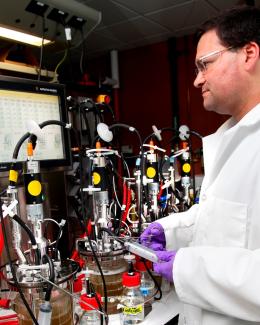Abstract
This research identified toxin detection limits using the variable fluorescence of naturally occurring microalgae in source drinking water for five chemical toxins with different molecular structures and modes of toxicity. The five chemicals investigated were atrazine, Diuron, paraquat, methyl parathion, and potassium cyanide. Absolute threshold sensitivities of the algae for detection of the toxins in unmodified source drinking water were measured. Differential kinetics between the rate of action of the toxins and natural changes in algal physiology, such as diurnal photoinhibition, are significant enough that effects of the toxin can be detected and distinguished from the natural variance. This is true even for physiologically impaired algae where diminished photosynthetic capacity may arise from uncontrollable external factors such as nutrient starvation. Photoinhibition induced by high levels of solar radiation is a predictable and reversible phenomenon that can be dealt with using a period of dark adaption of 30 minutes or more.


